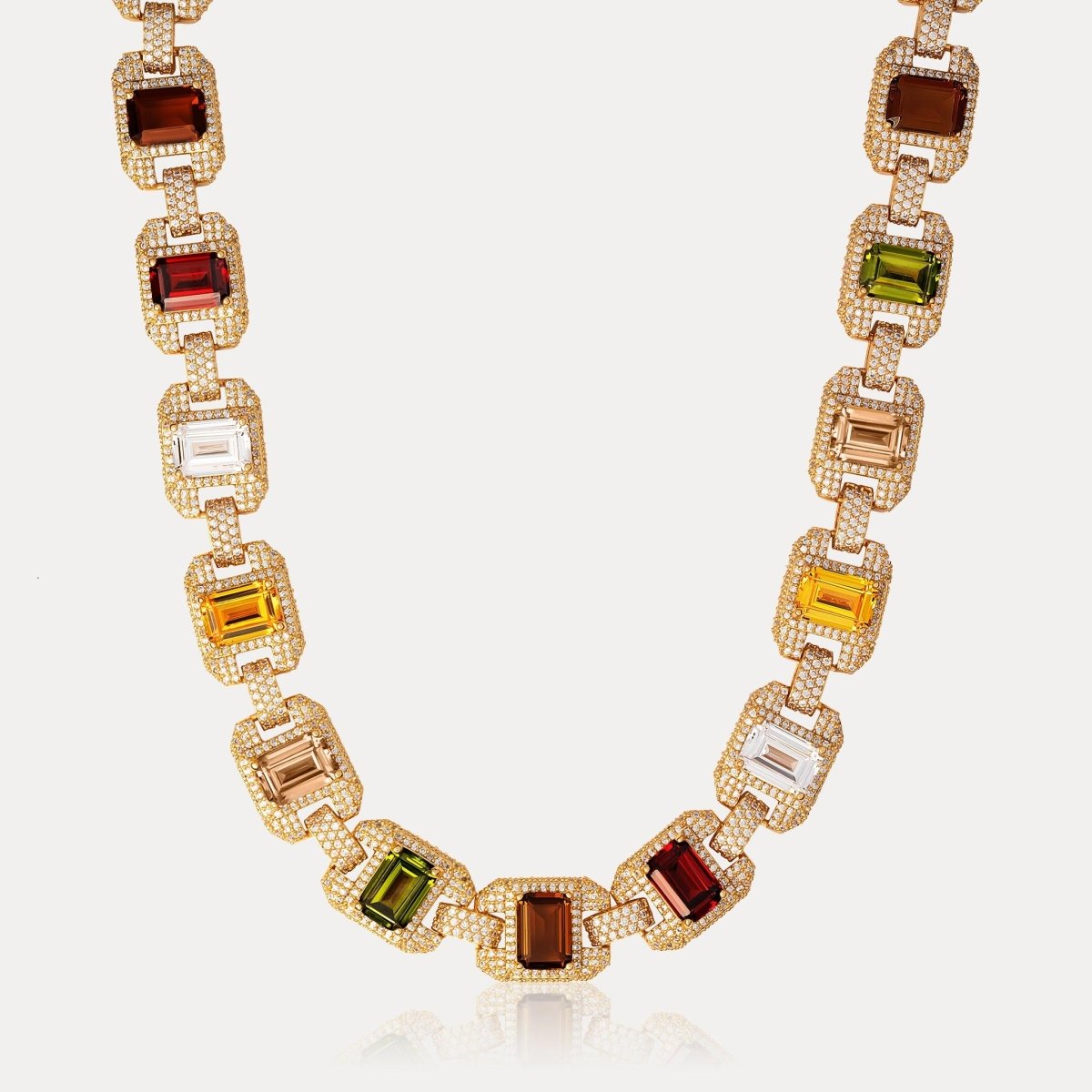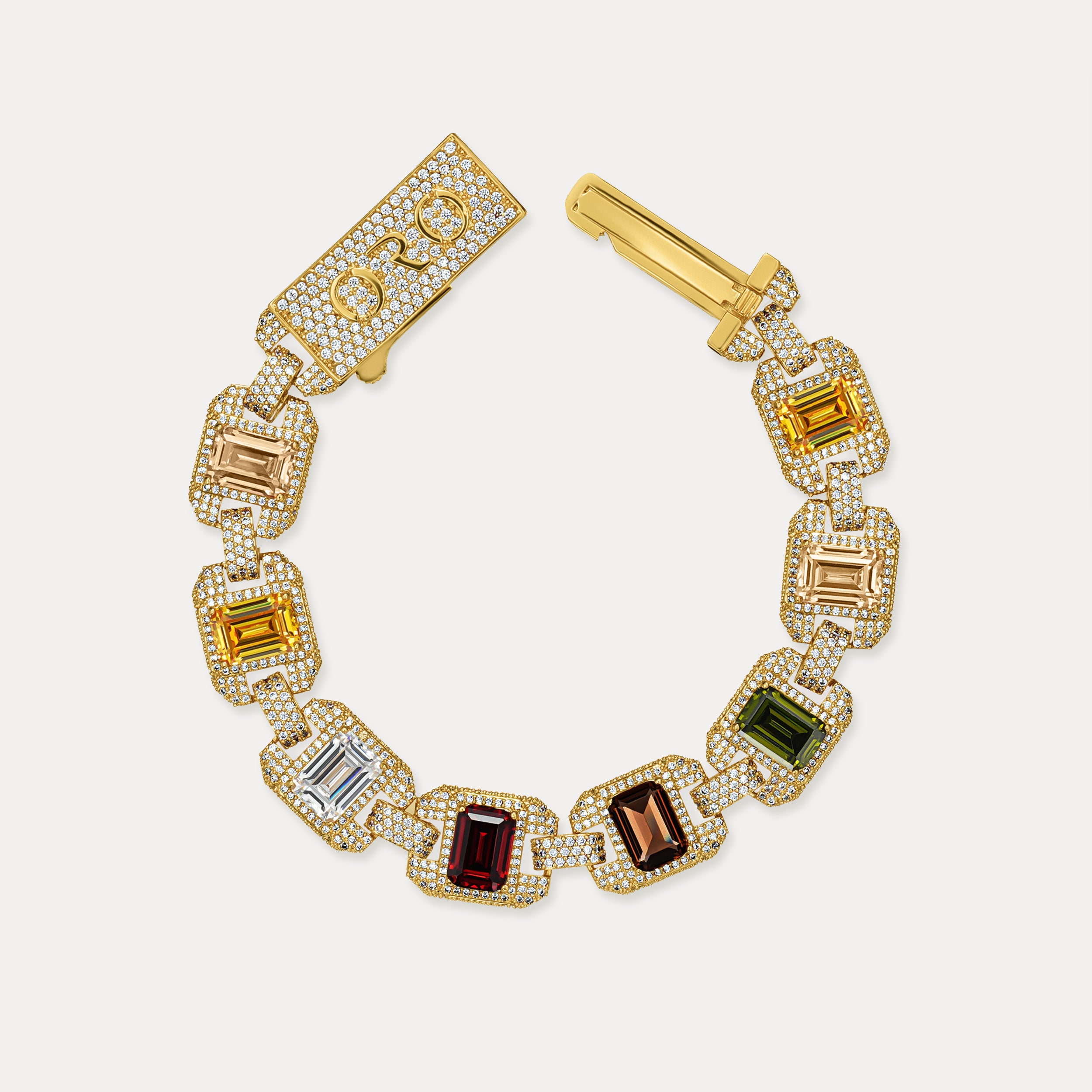How to Tell if Gold is Real
Determining whether gold is real or fake is crucial when buying or selling this precious metal. Counterfeit gold can lead to significant financial losses and can also affect the value of genuine gold. In this article, we will explore the importance of authenticating gold, the physical characteristics of real gold, testing methods for gold authentication, professional gold authentication services, and common mistakes to avoid when identifying real gold.
Key Takeaways
- Authenticating gold is important to avoid financial losses and maintain the value of genuine gold.
- Real gold has distinct physical characteristics, including its color, weight, density, malleability, and ductility.
- Testing methods such as acid testing, magnet testing, and electronic gold testing devices can help determine the authenticity of gold.
- Using professional gold authentication services provides reliable and accurate results.
- Common mistakes in identifying real gold include relying solely on visual inspection, being fooled by gold-plated or gold-filled items, and ignoring professional advice.
The Importance of Authenticating Gold
Why is it important to determine if gold is real?
Determining the authenticity of gold is crucial for several reasons:
-
Investment Protection: Authentic gold holds its value and can be a reliable investment. By ensuring the gold is real, you can protect yourself from purchasing counterfeit or low-quality gold that may not hold its value.
-
Avoiding Financial Loss: Fake gold can be sold at inflated prices, leading to significant financial loss. By authenticating gold before making a purchase, you can avoid falling victim to scams and fraudulent sellers.
-
Personal Safety: Some fake gold items may contain harmful substances such as lead or other toxic metals. By verifying the authenticity of gold, you can protect yourself from potential health risks.
-
Preserving Reputation: For businesses involved in the gold trade, accurately identifying real gold is essential to maintain credibility and reputation. Customers rely on reputable sellers to provide genuine gold products.
It is important to take the necessary steps to authenticate gold and ensure you are dealing with the real thing.
The risks of purchasing fake gold
Purchasing fake gold can have serious financial consequences. Not only will you lose the money you spent on the fake gold, but you may also miss out on potential profits if you were planning to sell the gold in the future. Additionally, fake gold may tarnish or wear off quickly, diminishing its aesthetic appeal and value. It is important to be cautious when buying gold and to verify its authenticity to avoid falling victim to scams and counterfeit products.
The value of genuine gold
When it comes to determining the value of genuine gold, there are several factors to consider. One of the most important factors is the purity of the gold. Pure gold, also known as 24 karat gold, is the most valuable and sought after. However, it is also the softest and most malleable form of gold, making it less practical for everyday use.
Another factor that affects the value of gold is its weight. Gold is measured in troy ounces, with each troy ounce equal to approximately 31.1 grams. The heavier the gold, the more valuable it is.
Additionally, the current market price of gold plays a significant role in determining its value. Gold prices fluctuate daily based on supply and demand, economic factors, and geopolitical events.
It's important to keep these factors in mind when assessing the value of genuine gold.
Physical Characteristics of Real Gold
Color and appearance of real gold
When it comes to determining the authenticity of gold, the color and appearance play a crucial role. Gold has a distinct yellow color that is often associated with wealth and luxury. Its color is vibrant and consistent, without any variations or discoloration. Subtle variations in shade or hue may indicate impurities or alloys.
To further assess the appearance of gold, you can also consider its luster and shine. Genuine gold has a natural brilliance that reflects light, giving it a radiant glow. This characteristic sets it apart from counterfeit gold, which may appear dull or lackluster.
To summarize, the color and appearance of real gold should exhibit a consistent, vibrant yellow color without any discoloration or variations. It should also have a natural brilliance and shine that reflects light.
Weight and density of genuine gold
When it comes to determining the authenticity of gold, weight and density play a crucial role. Genuine gold is known for its high density and weight, which are key indicators of its purity. The density of gold is approximately 19.3 grams per cubic centimeter, making it one of the densest metals. This density allows gold to feel heavy in comparison to other metals of similar size. Additionally, the weight of gold can be used to estimate its purity, as impurities can affect the weight of the metal.
To accurately measure the weight and density of gold, professionals use specialized tools such as a density meter or a precision balance. These instruments provide precise measurements that help determine the authenticity of gold. It is important to note that weight and density alone cannot confirm the purity of gold, but they are valuable factors to consider in the authentication process.
In summary, the weight and density of genuine gold are important characteristics that can help in determining its authenticity. Professionals use specialized tools to measure these properties accurately and assess the purity of gold.
Malleability and ductility of authentic gold
Real gold is known for its exceptional malleability and ductility. Malleability refers to the ability of a material to be hammered or rolled into thin sheets without breaking. Gold is one of the most malleable metals, making it easy to shape into various forms. Its ductility, on the other hand, refers to its ability to be stretched into a wire without breaking. Gold can be drawn into incredibly thin wires, making it ideal for jewelry making and other applications.
When testing the malleability and ductility of gold, jewelers often use a technique called the 'gold leaf test.' This involves hammering a small piece of gold into an extremely thin sheet, known as gold leaf. The thinner the gold leaf, the higher the quality of the gold. This test is a reliable way to determine the authenticity of gold based on its malleability and ductility.
It is important to note that while gold is highly malleable and ductile, it is still a relatively soft metal. This means that it can be easily scratched or dented if not handled with care. When purchasing gold jewelry, it is essential to consider the durability of the piece and take proper precautions to prevent damage.
Testing Methods for Gold Authentication
Acid testing for gold purity
Acid testing is a commonly used method to determine the purity of gold. It involves applying different concentrations of acid to the gold and observing the reaction. The acid used is usually nitric acid, which reacts differently with genuine gold compared to other metals or alloys.
During the acid testing process, the gold is scratched or rubbed against a testing stone, and then the acid is applied to the mark left on the stone. If the mark disappears or changes color, it indicates that the gold is not pure. However, if the mark remains unchanged, it suggests that the gold is genuine.
Here is a table summarizing the acid testing results:
| Acid Concentration | Reaction with Genuine Gold |
|---|---|
| Low concentration | No reaction |
| Medium concentration | Faint reaction |
| High concentration | Vigorous reaction |
It is important to note that acid testing should be done by professionals or individuals with experience, as mishandling the acid can be dangerous. Additionally, acid testing may leave a mark on the gold, so it is recommended to use this method on a small, inconspicuous area of the item.
Magnet test for real gold
When conducting a magnet test to determine if gold is real, it is important to remember that real gold is not magnetic. If a piece of jewelry or a gold coin is attracted to a magnet, it is likely to be made of a different metal or alloy. This simple test can help you quickly identify fake gold items.
It is worth noting that some gold jewelry may have small magnetic components, such as clasps or fasteners, that are made of a different metal. In these cases, the magnet test may not be conclusive. However, if the entire piece of jewelry is attracted to the magnet, it is a strong indication that it is not made of real gold.
To perform the magnet test, hold the magnet close to the gold item and observe if it is attracted or repelled. Remember to use a strong magnet for accurate results.
Important tip: If you are unsure about the authenticity of a gold item, it is always recommended to consult with a professional gold authentication service.
Electronic gold testing devices
Electronic gold testing devices are a convenient and reliable tool for determining the authenticity of gold. These devices use advanced technology to analyze the composition of gold and provide accurate results. One popular type of electronic gold testing device is the X-ray fluorescence (XRF) analyzer. This device uses X-ray technology to measure the elemental composition of gold, allowing for quick and precise identification of genuine gold.
In addition to XRF analyzers, there are also electronic gold testers that use electrical conductivity to determine the authenticity of gold. These testers work by measuring the resistance of a gold sample to an electrical current. Genuine gold has a characteristic electrical conductivity, and these devices can detect any variations that may indicate the presence of impurities or counterfeit materials.
Using electronic gold testing devices can save time and provide peace of mind when buying or selling gold. However, it is important to note that these devices should be used in conjunction with other testing methods to ensure accurate results.
Professional Gold Authentication Services
Benefits of using professional gold authentication services
Using professional gold authentication services offers several advantages:
-
Expertise: Professionals have extensive knowledge and experience in identifying real gold, ensuring accurate results.
-
Advanced Testing Methods: These services utilize sophisticated equipment and techniques to determine the authenticity of gold, providing reliable and precise results.
-
Peace of Mind: By relying on professionals, individuals can have confidence in the authenticity of their gold, avoiding the risks of purchasing fake or counterfeit items.
-
Time and Convenience: Professional gold authentication services offer a quick turnaround time, allowing individuals to authenticate their gold efficiently and conveniently.
-
Protection of Investment: Authenticating gold through professionals helps protect the value of the investment, ensuring that individuals are purchasing genuine gold of the highest quality.
How to choose a reputable gold authentication service
When selecting a gold authentication service, it is crucial to consider a few key factors:
-
Reputation: Look for a service with a strong reputation in the industry. Check for customer reviews and testimonials to ensure their credibility.
-
Expertise: Choose a service that has a team of experienced professionals who specialize in gold authentication. Their knowledge and expertise will ensure accurate and reliable results.
-
Accreditation: Verify if the authentication service is accredited by recognized organizations or regulatory bodies. This ensures that they adhere to industry standards and follow ethical practices.
-
Turnaround Time: Consider the turnaround time offered by the service. It is important to choose a service that can provide timely results without compromising on accuracy.
-
Cost: Compare the cost of different authentication services. While it is important to consider the price, prioritize quality and reliability over cost alone.
Remember, choosing a reputable gold authentication service is essential to ensure the authenticity of your gold and protect your investment.
Costs and turnaround time for gold authentication
When it comes to gold authentication, it is important to consider the costs involved and the turnaround time for the process. The cost of gold authentication can vary depending on the method used and the service provider. Reputable gold authentication services may charge a higher fee, but they often provide more accurate and reliable results. It is advisable to research and compare the prices of different service providers to ensure you are getting the best value for your money.
In addition to the cost, the turnaround time for gold authentication is another factor to consider. Some service providers may offer same-day or expedited services for an additional fee, while others may have longer processing times. It is important to inquire about the estimated turnaround time before choosing a service provider, especially if you have a specific deadline or time constraint.
To make an informed decision, it is recommended to weigh the costs and turnaround time against the importance and urgency of authenticating your gold.
Common Mistakes in Identifying Real Gold
Relying solely on visual inspection
When it comes to determining the authenticity of gold, relying solely on visual inspection can be misleading. While visual cues can provide some initial clues, they are not foolproof. Color is often used as an indicator of real gold, with a rich, deep yellow color being associated with genuine gold. However, it's important to note that gold can be alloyed with other metals, which can affect its color. Weight is another factor to consider, as genuine gold is dense and heavy. However, counterfeit gold can be made to mimic the weight of real gold by using other materials. Therefore, it is crucial to use additional testing methods to confirm the authenticity of gold.
To accurately determine if gold is real, it is recommended to use a combination of testing methods. These methods can include acid testing, magnet testing, and electronic gold testing devices. Acid testing involves applying nitric acid to the gold to determine its purity. Magnet testing can help identify non-magnetic metals that may be used to counterfeit gold. Electronic gold testing devices use advanced technology to analyze the composition of the gold and provide accurate results.
It is important to remember that relying solely on visual inspection can lead to costly mistakes. By using a combination of testing methods, you can ensure that you are accurately authenticating gold and avoiding the risks of purchasing fake gold.
Being fooled by gold-plated or gold-filled items
When it comes to identifying real gold, one common mistake is being fooled by gold-plated or gold-filled items. These items may have a thin layer of gold on the surface, giving them the appearance of genuine gold. However, underneath the surface, they are made of a different material.
To avoid being deceived by gold-plated or gold-filled items, it is important to know how to differentiate them from real gold. Here are a few tips:
- Check for hallmarks: Genuine gold items are usually stamped with hallmarks that indicate their purity. Look for these marks to ensure the authenticity of the gold.
- Inspect for wear and tear: Gold-plated or gold-filled items may show signs of wear and tear, revealing the base metal underneath. Examine the item closely for any signs of peeling, discoloration, or fading.
- Use a magnet: Real gold is not magnetic, so if a piece of jewelry or an object is attracted to a magnet, it is likely not made of genuine gold.
Remember, it is always better to be cautious and verify the authenticity of gold items before making a purchase.
Ignoring professional advice
When it comes to identifying real gold, it is crucial not to ignore professional advice. Experts in the field have the knowledge and experience to accurately determine the authenticity of gold. By seeking their guidance, you can avoid costly mistakes and ensure that you are investing in genuine gold.
It is important to remember that visual inspection alone is not enough to authenticate gold. While it can provide some initial clues, professional testing methods are necessary for a definitive assessment. Ignoring professional advice and relying solely on visual inspection can lead to the purchase of fake or counterfeit gold.
Additionally, be cautious of relying on information from unverified sources. Misinformation and inaccurate claims can easily circulate, especially online. Consulting with reputable professionals will help you navigate through the vast amount of information available and make informed decisions.
In summary, ignoring professional advice can result in costly mistakes and the purchase of fake gold. By seeking the expertise of professionals and utilizing proper testing methods, you can ensure that your gold investments are genuine and valuable.
Conclusion
In conclusion, determining whether gold is real or fake can be a challenging task. However, by following the methods and tips outlined in this article, you can increase your chances of accurately identifying genuine gold. Remember to conduct a visual inspection, perform magnet and density tests, and seek professional assistance when in doubt. With these techniques, you can confidently navigate the world of gold and make informed decisions when buying or selling this precious metal.
Frequently Asked Questions
How can I determine if gold is real?
There are several methods to determine if gold is real, including performing acid tests, using a magnet, and utilizing electronic gold testing devices.
What is the color of real gold?
Real gold has a distinct yellow color. However, it can also be found in other colors such as white, rose, and green, depending on the metal alloys mixed with it.
Can fake gold pass the acid test?
No, fake gold will not pass the acid test. The acid test is a reliable method to determine the purity of gold.
Is gold-plated jewelry real gold?
Gold-plated jewelry is not considered real gold. It is made by coating a base metal with a thin layer of gold.
How can I choose a reputable gold authentication service?
When choosing a gold authentication service, consider their reputation, experience, customer reviews, and certifications. It is also important to inquire about their testing methods and turnaround time.
What are the costs associated with gold authentication?
The costs of gold authentication can vary depending on the service provider and the type of testing required. It is best to inquire about the costs upfront.
Best Sellers



















































Leave a comment
This site is protected by hCaptcha and the hCaptcha Privacy Policy and Terms of Service apply.